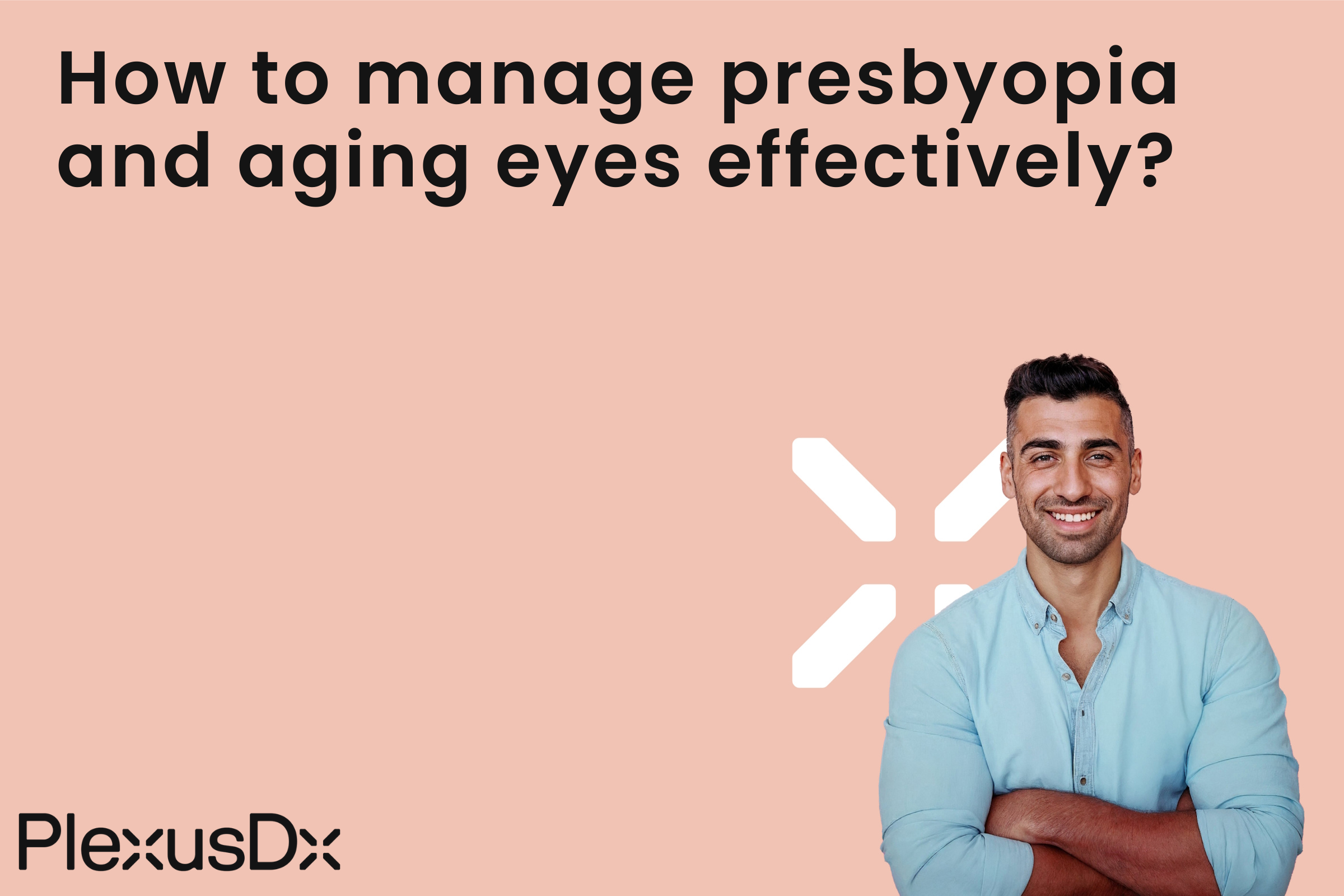Presbyopia: Have you started to detect visual changes as you age?
You may observe that you need to hold reading materials at a greater distance or suffer from eyestrain more often. Many people over 40 experience common symptoms of presbyopia which is a condition caused by aging. This blog post examines presbyopia in detail and investigates its genetic aspects while offering practical advice for effective management of aging eyes.
Presbyopia creates difficulty for the eye in maintaining clear focus on nearby objects. Presbyopia develops from aging processes which reduce the lens inside the eye's flexibility unlike nearsightedness or farsightedness that result from the shape of the eyeball or cornea. When the lens loses flexibility due to aging it becomes difficult to switch focus between close and distant objects which creates problems for activities demanding sharp near vision like reading and digital device use.
Presbyopia affects most people after they turn 40 yet its impact can be controlled through different corrective options. Common signs of presbyopia involve eyestrain and headaches when doing close work along with holding reading materials far away to see clearly. Understanding presbyopia treatment options becomes crucial once you begin to notice these symptoms to preserve your standard of living.
PlexusDx includes genetic testing for presbyopia under their System Function & Longevity category. The existing evidence indicates a low-quality genetic model for presbyopia despite ongoing research into its genetic predispositions. Additional research must be conducted to validate these findings and explore further genetic contributors to presbyopia.
To manage presbyopia sufferers can choose from various methods including reading glasses as well as surgical options that improve close-up vision. For those coping with presbyopia these practical tips will help you manage this age-related condition successfully:
- Regular Eye Exams: Make sure to get regular eye examinations to track vision changes and bring any eye concerns to your healthcare provider's attention.
- Corrective Lenses: Choose reading glasses or multifocal lenses to enhance near vision and decrease eyestrain during close work tasks.
- Lighting Adjustments: Use sufficient lighting for reading and close work activities to minimize eye strain.
- Digital Device Use: Minimize eye fatigue from smartphones, tablets, and computers by taking regular breaks and modifying screen settings.
- Surgical Options: You should consider discussing monovision LASIK or refractive lens exchange procedures with your eye care specialist for permanent vision correction.
Maintaining visual health as you age requires knowledge about presbyopia and its effects on aging eyes. You can experience improved quality of life and clear vision through understanding presbyopia and taking practical management steps along with genetic testing options. Address presbyopia through proactive measures while utilizing Precision Health & Wellness tests from PlexusDx to discover your genetic eye health traits. Go to PlexusDx.com or shop at Amazon and Walmart to get information about visual health maintenance.

Share:
What is the role of COL5A1 gene in injury susceptibility and fitness enhancement?
Genetic basis and management of milk allergy?